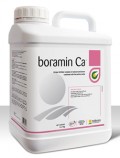
연락처
다음 양식을 사용하여 질문이나 제안 또는 피드백을 보내주십시오. 당사의 전문가가 곧 귀하에게 회신을 드리도록 하겠습니다.

다음 양식을 사용하여 질문이나 제안 또는 피드백을 보내주십시오. 당사의 전문가가 곧 귀하에게 회신을 드리도록 하겠습니다.

Plants, like all living organisms need a combination of nutrients (elements) for growth. These nutrients can only be used by the plant for growth and yield if the nutrients are in a form, or converted by the plant into a form, that the plant can use. A good example is to think of a raw potato. If humans eat a raw potato it it does not provide much nutrition, but when it is cooked it becomes easily digestibility and is very nutritious.
The main component of growing plants are proteins and sugars. The principal component of proteins (and some sugars) are usually different combinations of Amino Acids.
Amino Acids are therefore very important compounds:
Plants have the ability to synthesize these 20 building block amino acids from Carbon and Oxygen (air), water (rainfall & irrigation) and Nitrogen from the soil, manure or fertiliser:
Usually a plant can produce enough building block Amino Acids from the synthetic fertiliser and manure Nitrogen but in times of:
the plant needs to synthesise a lot of Amino Acids to deal with the stressful growing conditions. Plant growth slows down while the plant diverts energy into making Amino Acids to alleviate the stressful conditions. Yield and quality are reduced as a result.
By supplying Amino Acids and Organic Nitrogen to the plant before or during these crucial stressful stages the plant can continue its maximum growth and yield potential without setback.
As stressful events occur continuously throughout the growing season best results are achieved by applying Amino Acids little and often rather than one single large application.
However all building block amino acids are not the same. The only building block Amino Acids that are immediately useful to the plant are the L-α free amino acids (L-alpha Free Amino Acids).
OHS management is easy with Tradecorp:
A few tips on using QuickSDS:
Tradecorp APAC Pty. Ltd. © 2018 | 법적 고지 | 개인 정보 취 | powered by: RightClick.pt
